
Subaru Forester 2023: Before crossovers were the go-to everyday vehicle for increasing automobile purchasers, Subaru invented the recipe for a proper little sport utility vehicle. Except for the BRZ and WRX, Subaru has incorporated all-wheel drive and a clever combination of low centre of gravity and high ground clearance into almost all of its 21st-century cars. The brand has come to represent a certain kind of carefree outdoor lover who is passionate about national parks and animal rescue. Clever, practical, and very powerful—the Subaru Forester easily slays its market.
The innovative yet subtle Forester, introduced in 1997 and subsequently undergone five redesigns, may sometimes be overlooked in the growing sea of copycats. As a follow-up to last year’s major redesign that included new safety technology, redesigned front-end styling, and the even more rugged Wilderness trim, the 2023 Subaru Forester gets only a minor interior modification to comply with the Insurance Institute for Highway Safety’s strict guidelines regarding whiplash reduction.
Best-selling small SUVs with excellent style, fuel efficiency, and dependability, like the Honda CR-V, Hyundai Tucson, and Toyota RAV4, nonetheless threaten the Forester. However, as our recent head-to-head comparison shows, the Subaru can do things that the RAV4 TRD Adventure trim is not. Because of its adventurous attitude, it appeals to purchasers searching for more durable wheels, like those seen on the Ford Bronco Sport Badlands, Jeep Cherokee, and smaller Jeep Compass Trailhawk models.
Even if a single powertrain can’t please everyone, the Forester’s 182-horsepower flat-four engine and continuously variable automatic gearbox (CVT) system work well together. It offers a smooth ride, reasonable handling, and decent fuel efficiency, but there isn’t much thrill when driving. But off-road, the Forester lives up to its moniker and Subaru’s rugged reputation. While all models are perfect on dirt trails, the highest trims, particularly the Wilderness, can carry you far into the Wilderness with no issues, thanks to the company’s X-Mode drive settings.

Another great selling feature is its capacity to transport both people and equipment. The Forester’s total load capacity is on par with the best in its class, and its newly strengthened roof rails make it suitable for carrying canoes or camping on rooftops. Although it’s a little short of the class leaders in the back, there’s ample legroom and firm seats—though not as strong as Foresters from previous years. The inside is reasonably practical and helpful thanks to the upright form, and the higher trims provide significant affordable modern amenities.
A portion of the technology consists of active safety equipment, and Subaru offers an extensive range of aids in this area that are complemented by excellent IIHS and NHTSA ratings. These technologies function effectively like the adaptive cruise control that comes standard on other competitors’ vehicles. The Subaru isn’t a very interesting or thrilling vehicle to drive in town or daily, but it does a lot of tasks well and gets better gas efficiency than its competitors in the off-road market. Though it may not be flashy, compact crossover buyers must check out the Forester, especially those who like to go off the beaten path.
Performance: Subaru Forester
It’s challenging to find a serious issue with the 2.5-litre horizontally opposed four-cylinder engine of the Subaru Forester, which generates 182 horsepower and 176 pound-feet of torque, even though its power and acceleration figures are inferior to those of several rivals. All versions, except the Wilderness, which has eight gears, are paired with a continuously variable automatic gearbox (CVT) that offers seven manually selected shift modes.
Although it takes 8.5 to 9.0 seconds to accelerate from a standstill to 60 mph, this is still a good amount of acceleration for everyday commuting, and the power is there when needed on the highway. Although the steering is not very accurate, the ride is soft and supple, which is better for absorbing the impacts of rough terrain. Nevertheless, the Wilderness has a considerable body lean due to its higher perch, and the Forester isn’t very thrilling on the road.
When you step off the pavement, everything is different. The Forester thrives on dirt trails and in moderately compacted mud, rock, and sand conditions. With the company’s refined X-mode electronic controls, Subaru’s standard, potent AWD system and active torque vectoring work together to enhance traction and distribute power to the wheel where it will be most effective. It is much more comfortable than most on-road vehicles on a dirt route after an hour because of the soft, long-travel suspension, which helps shield occupants from most bumps.
With increased ground clearance from 8.7 to 9.2 inches, a revised CVT with a higher final drive ratio (4.11:1 compared to 3.70:1) and a more comprehensive gear range, skid plates, and distinct front and rear bumpers for more extreme approach and departure angles—all of these features are accentuated in the new Wilderness model. Regarding towing capacity, the Forester is less capable than other vehicles; the Wilderness is the only model whose peak load capacity is 3,000 pounds. All other models’ maximum load capacity is 1,500 pounds.
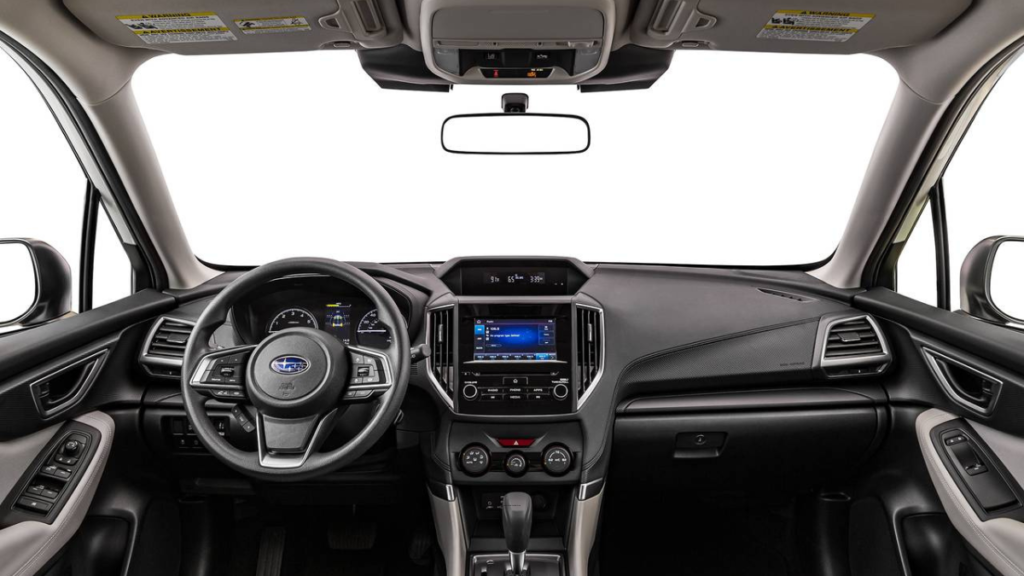

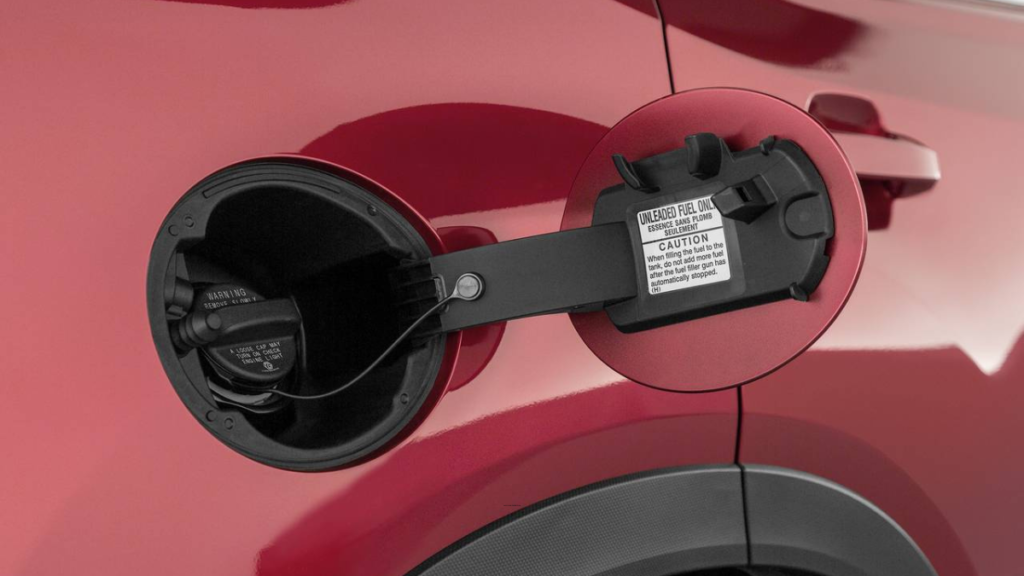
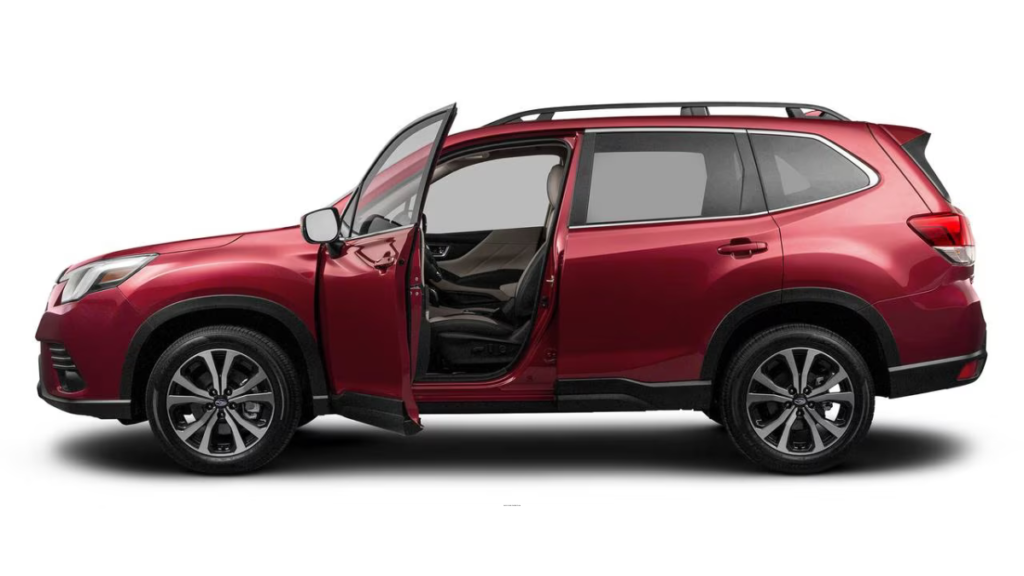
Fuel Efficiency: Subaru Forester
The Forester isn’t very quick, but it is relatively economical for a vehicle intended for daily use and dirt tracks. It’s encouraging to see how well this model fares with fuel economy since Subaru hasn’t always been good at it with prior models. The Wilderness, which is a touch less aerodynamic and has less mileage-friendly gearing, achieves 26 mpg combined (25 city, 28 highway), while Regular Foresters return 29 mpg combined (26 mpg city, 33 motorway).
These ratings are comparable to those of the majority of the Forester’s closest on-road competitors, and even the less fuel-efficient Wilderness is still much better than the 2.0-liter Ford Bronco Sport (23 mpg combined) and Jeep Cherokee Trailhawk (21 mpg combined), as well as more ardent off-roaders like the Jeep Wrangler.
Subaru does not provide a hybrid or plug-in hybrid, unlike Honda, Hyundai, and Toyota (as it does on the smaller Crosstrek). Although it utilizes conventional petrol and is decent for its class, Forester’s non-hybrid powertrains are not as good as those of the leading small SUVs in the sector.
Safety & Driver Assistance :
Similar to previous Subaru models, the Forester has excellent safety ratings. The Insurance Institute for Highway Safety (IIHS) rates the 2023 Subaru Forester as a Top Safety Pick+, and unlike some competitors, all trims get this grade. The manufacturer expanded the rear seat head restraints on 2023 models to comply with the agency’s recommendations for minimizing whiplash. The National Highway Traffic Safety Administration (NHTSA) awards the small crossover five stars.
Moreover, adaptive cruise control with lane centring, frontal collision warning, automated emergency braking with pedestrian recognition, lane departure warning with lane keep assist, and now standard adaptive headlights are all part of Subaru’s extensive EyeSight safety package.
In addition to adding optional emergency evasive steering assistance below 50 mph, which may help prevent crashes, the carmaker also improved its camera systems. Additional options on all versions other than the top-tier Touring include blind-spot recognition, rear cross-traffic alerts, rear automated emergency braking, and a driver monitoring system. But at rivals like Jeep and Ford, many safety features that come standard on the Forester are pricey extras.
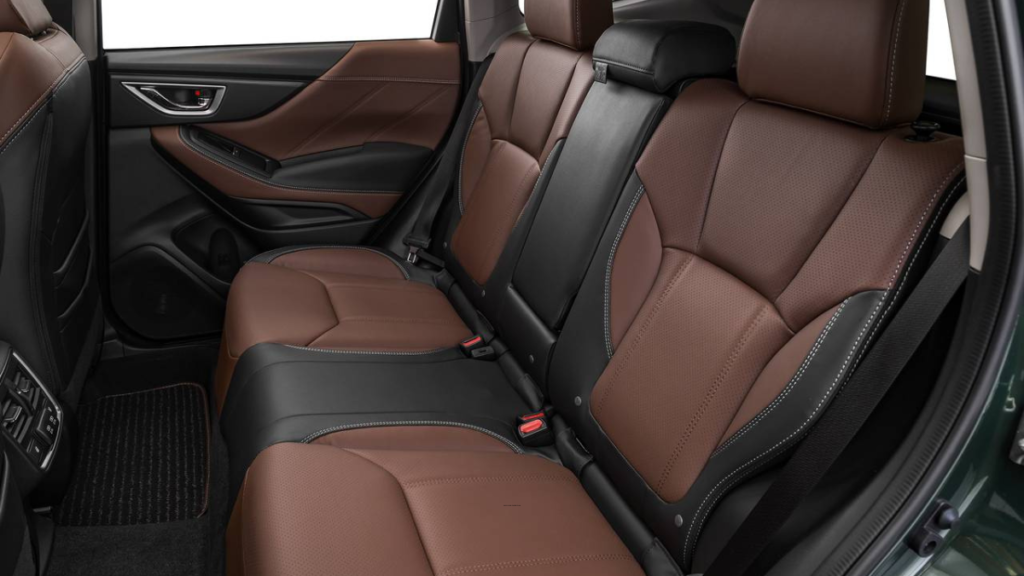


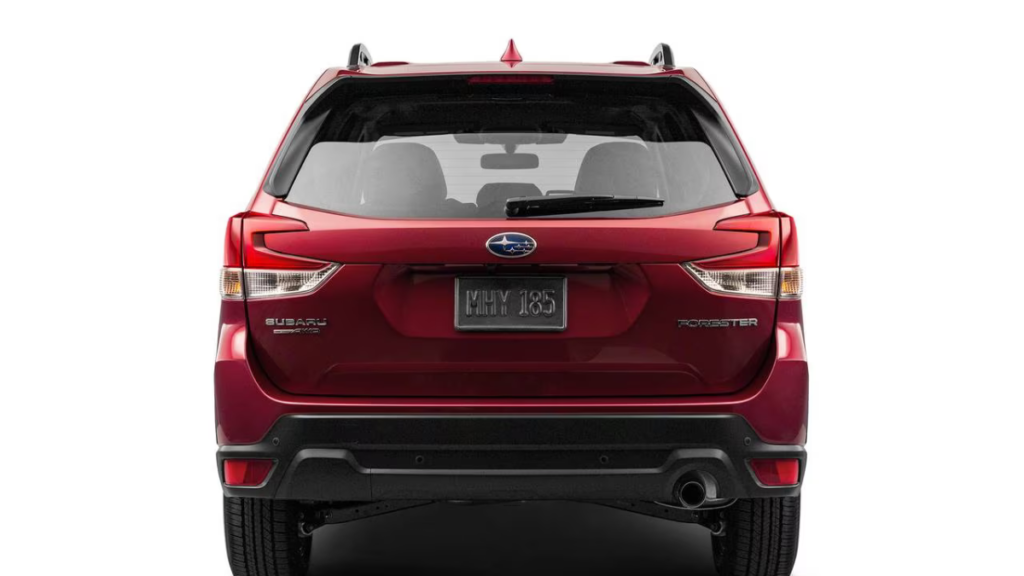
Coziness & Space:
Carrying people and stuff is where the Subaru Forester shines, even with its compact dimensions. Its towering, boxy appearance may not be very striking from an aesthetic standpoint, but you start to like it once you go inside. Compared to the CR-V and RAV4, it has higher headroom, shoulder space, and legroom (43.3 inches), making it the most spacious. Regarding back legroom, however, it is in the pack’s centre.
With 39.4 inches, it’s slightly smaller than the CR-V, Tucson, or Cherokee but roomier than the RAV4 and far more extensive than the Bronco Sport.
Though they’re still tricky, seats in earlier Foresters will be more pleasant for owners returning than those from the 2000s or 2010s. The seats may become uncomfortable after hours of bouncing about on rough dirt paths or rocks. Still, in some other vehicles, like the Chevy Trailblazer or the CR-V, you wouldn’t be on the trail or would be pretty happy to return to Macadam after 30 minutes.
Infotainment: Subaru Forester
Given the widespread use of smartphones and the availability of standard wired Apple CarPlay and Android Auto, it seems logical that Subaru has not invested significantly in its infotainment system. Base, Premium, and Sport versions of the Forester line come with a 6.5-inch infotainment screen; the Sport, Wilderness, Limited, and Touring trims come with an 8.0-inch screen, which is optional.
While the bigger unit is bright, sharp, and simple, the smaller one is essential. Although they are now optional, gesture controls aren’t all necessary for the HVAC system. While most purchasers generally won’t need more than the two USB outlets on the base and the four ports on all higher trims, many other manufacturers provide USB-C for quicker accessory charging, wireless device charging, and 110-volt outlets in the cargo area that can power small appliances. With the Forester, there are none.
A Wi-Fi hotspot is included on all models save the basic model, although it needs a subscription. The company’s roadside assistance-equipped Starlink telematics technology works similarly, except Subaru is covered for the first three years of use.
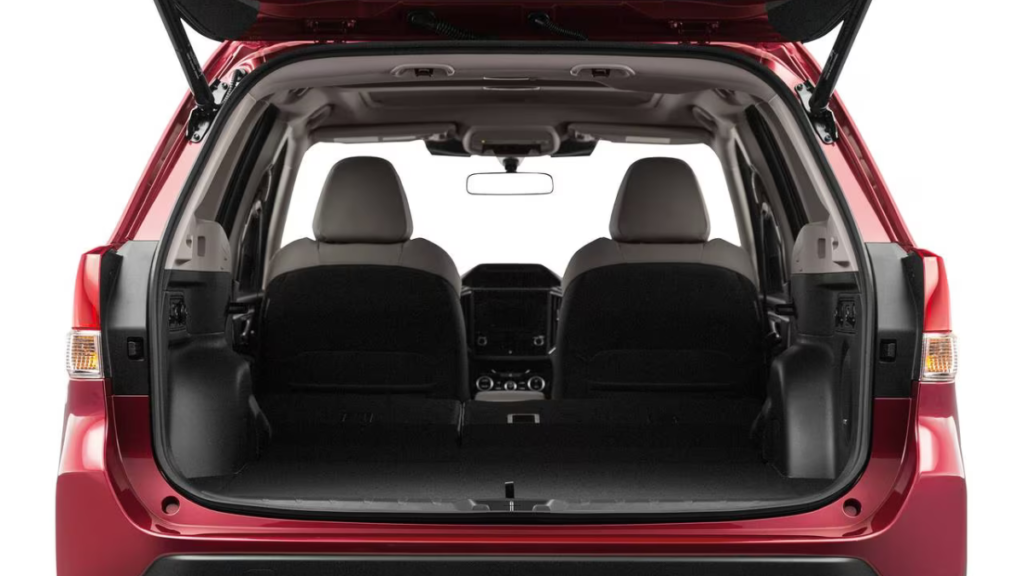
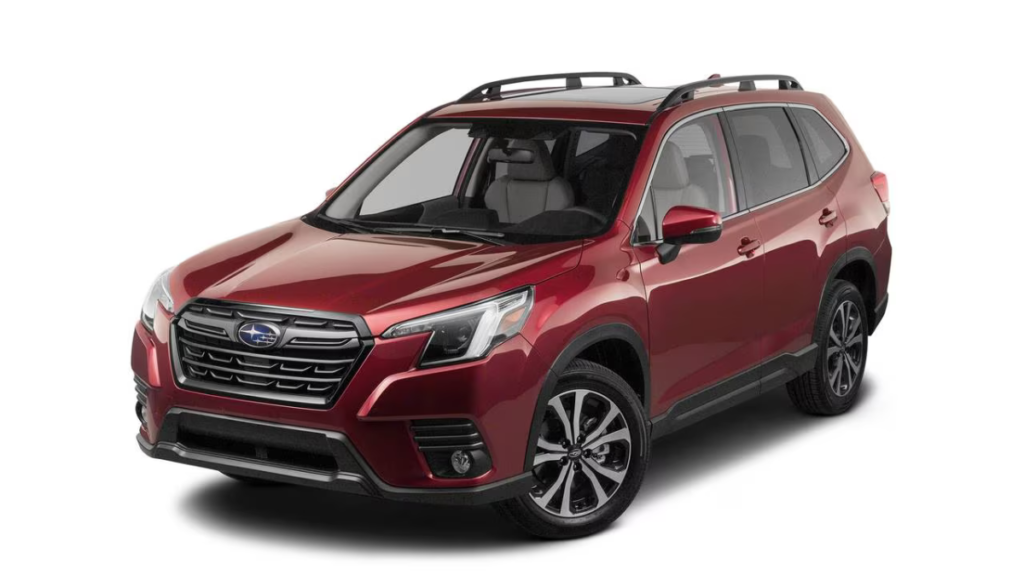


Storage & Cargo Space:
The Forester’s form is again valid when it comes to towing goods. The Forester outstrips its competitors, who can go off-road, offering up to 31.1 cubic feet of room behind the back seats and 74.3 when the seats are folded. While the Honda and Hyundai have somewhat more overall capacity while the RAV4, Tucson, and CR-V have more excellent room behind the back seats, the Jeep Cherokee Trailhawk (54.7) and the Ford Bronco (65.2) have much less total luggage space.
Subaru also likes to highlight the low liftover height of the tailgate and the spacious cargo floor, which is a big selling point for those who need to load up a lot of stuff without piling it up like Jenga blocks. The cargo floor measures 43.3 inches wide between the wheel wells and 35.7 inches long behind the rear seats.
In addition, the Forester features a large amount of storage for little items. Subaru has equipped all trim levels with lighting and hooks in the cargo compartment to facilitate finding things for overnight campers. Additionally, the carmaker receives bonus points for providing the Forester with more extensive roof rail supports that rest on a more substantial section of the body structure. Compared to ordinary Foresters’ 700 and 176 pounds, the Wilderness variants’ capacities are increased to 800 pounds while the vehicle is stationary and 220 pounds when moving. It is a valuable addition for those who use freight carriers on rooftops.
Design: Subaru Forester
Although some would consider it iconic, not everyone will like the Forester’s boxy, wagon-like body—though this was presumably intended to be the case. At worst, the design is ungainly and, at best, forgettable, with its jumble of angles, bulges, and huge lights. The Wilderness’s body cladding and gold accents are nice touches, but most drivers don’t want to make a daily fashion statement out of the black hood stamp that lowers glare. That and the Sport with the red trim are the best-looking Foresters, but curb beauty isn’t why anybody purchases this SUV.
But the tall, boxy design of the Forester means a large cargo and cabin room and excellent visibility everywhere, which is especially useful on narrow routes through dense woods. Despite having fewer complex controls than other Subaru models, the inside is still simple and practical like the outside. Even if it’s not beautiful, functional design is appealing.

Is the 2023 Subaru Forester Worth it?
The Forester comes in six different trim levels: Sport ($32,190), Wilderness ($35,245), Limited ($34,300), Premium ($30,620), basic ($27,620), and Touring ($37,720). A $1,225 destination charge is included in all listed rates.
Though the Sport is undoubtedly the most excellent bargain, the Limited and Touring provide additional equipment and extras, including GPS, rear automated emergency braking, and a driver monitoring system. They are somewhat better inside than the others. It just slightly costs more than the Premium and comes with a nice blackout trim kit and other equipment that helps to liven up the flashy appearance. We believe the Sport is the best option for the Forester, with one notable exception, even if several of Subaru’s other lower-end trims are excellent deals.
The Wilderness model is the best option for those who often go on dirt routes. It increases the standard Forester’s towing capability to 3,000 pounds, making it a viable contender to more costly small off-road crossovers like the Cherokee Trailhawk and Bronco Sport Badlands. It also has rails that can hold up to 800 pounds of static weight and a reinforced roof for overlanders. However, as the original unit isn’t the strongest, we’d advise getting the dealer-installed aftermarket front skid plate (about a $500 add).
What is the cost of Subaru Forester insurance?
The Forester’s insurance premiums are somewhat lower than those of its competitors. The most costly model to insure, the Limited, costs $1,828 annually, while the typical 30-year-old female driver with a clean record would pay an average yearly premium of $1,703 for a basic model. A Ford Bronco Sport would cost $1,869, a Toyota RAV4 TRD Adventure would cost $1,908, and a comparable Honda CR-V would cost $1,830.
Subaru Forester Generations
Fifth Generation
2019 to Present
Based on Subaru’s Global Platform design, the fifth-generation Forester debuted for the 2019 model year. Although a plug-in hybrid (PHEV) version of this generation of Forester is available in other countries, it is not now offered for sale in the United States. The Forester Wilderness is a specific off-road variant Subaru introduced in 2022 with an elevated body package. The smaller Crosstrek Hybrid is a viable option for buyers who desire a plug-in hybrid electric vehicle (PHEV) but don’t want as much room.
Fourth Generation
2014 to 2019
A new continuously variable automatic gearbox that improved fuel efficiency was added to the more prominent fourth-generation Forester, which also increased load capacity. The compact SUV handled on- and off-road health thanks to features like X-Mode, Hill Descent Control, and a sport-tuned suspension.
Third Generation
2009 to 2013
The most significant alterations to the third-generation Forester were in the design and proportions, nearly entirely increased to resemble an SUV more closely.
Second Generation
2003 to 2008
Some enhancements over the first-generation model were an aluminium hood and weight-saving perforated structural rails. The second-generation Forester was still based on the contemporary Impreza platform.
First Generation
1997 to 2002
One of the first cars to provide a higher stance like an SUV with a car-like appearance was the first generation Forester, which debuted in 1997 and was based on Impreza’s chassis. Together with standard AWD, it was powered by the same 2.5-litre boxer engine as the Legacy.
Verdict
The 2023 Subaru Forester is a very competent and helpful little crossover that excels in all areas except looks. Its tall, boxy interior offers more excellent head and shoulder space than rivals while maintaining a spacious cargo area that can hold an astonishing amount of goods, more than makes up for the vehicle’s lack of curb appeal. With 8.7 to 9.2 inches of ground clearance, active torque vectoring, standard all-wheel drive, and Subaru’s X-Mode, which can handle trails, dirt, and rocks in ways most other compact crossovers can’t, the vehicle’s single-engine performs poorly on pavement but excels off it.




